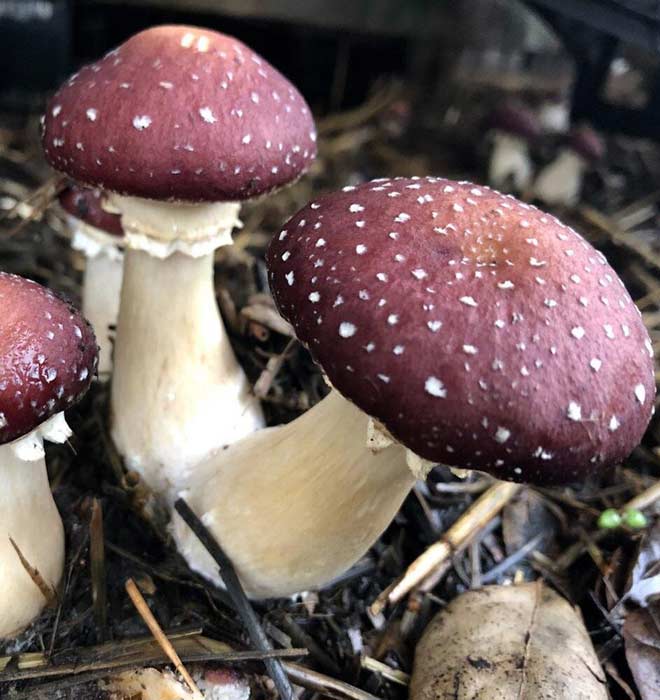Stropharia rugosoannulata
The wine cap or king stropharia is a saprophytic mushroom that prefers to grow outdoors on mulch enriched with wood chips. It is the ideal mushroom to cultivate in shaded garden corners waiting to be used, or in cool spots under tomato or bean plants.
History
The wine cap, also known as “wine cap” in English, is a mushroom native to North America, first described in 1922 in Massachusetts. Initially little known, it was rediscovered in Germany in the 1960s, where it became popular as an easy-to-grow mushroom on straw, hence its nickname “garden giant” or “straw mushroom.” Its cultivation quickly spread throughout Central Europe, especially in Poland, Hungary, Italy, and France, and then to China from the 1990s, where it is now produced on a large scale.
Wine cap is appreciated for its ability to grow on various agricultural substrates such as straw, wood chips, or plant waste, making it a valuable ally for ecological gardening. It is cultivated by both professionals and amateur gardeners, often outdoors under mulch or in orchards. In addition to its culinary value, it is studied for its medicinal properties, especially antioxidant and immunomodulatory effects.
In France, although rare in the wild, local strains have been isolated and distributed for cultivation. Today, the wine cap is recognized as a large, easy-to-grow edible mushroom and a symbol of modern sustainable mushroom cultivation.
Nutritional Composition
Contains all 8 essential amino acids for humans
- Vitamins : B2, B3, B5, B6, B9, B12, C, D2 (after one hour of sun exposure)
Minerals and trace elements: zinc, manganese, magnesium, copper, phosphorus, selenium, iron, calcium, potassium
Protein: 20–25% (dry weight)
Polysaccharides: beta-(1,3-1,6)-glucans
Phenolic derivatives: hericenones, erinacines
Sterols: ergosterol (provitamin D2), beta-sitosterol
Fibers
Lectins
Taste Experience
Wine cap offers firm flesh with a mild, slightly earthy flavor, with notes of hazelnut, potato, or asparagus. Its robust texture and subtle taste make it a versatile mushroom, ideal sautéed, braised, or in soups—delicate and able to enhance many dishes.
Recipes coming soon!
Functional and Medicinal Aspects
This mushroom is still relatively little studied, probably due to the difficulty of industrial production. However, it is being researched for its antioxidant and immunomodulatory properties, as well as its potential in bioremediation and ecological gardening.
For those interested, here is a link to PubMed: Straphoria Rugosoannulata – Search results – PubMed (nih.gov)
Disclaimer:
It is important to note that studies on the therapeutic properties of these mushrooms are still ongoing.
The information on our website does not replace professional medical advice and should not be used to diagnose, treat, or prevent any disease.
Please consult a doctor before using Stropharia rugosoannulata for medicinal purposes. Results may vary between individuals.

